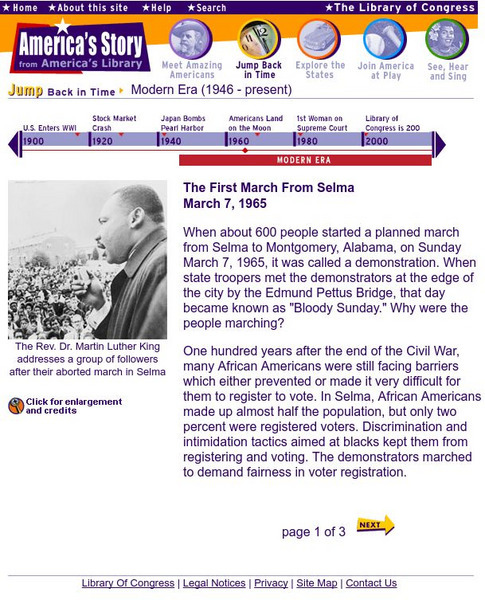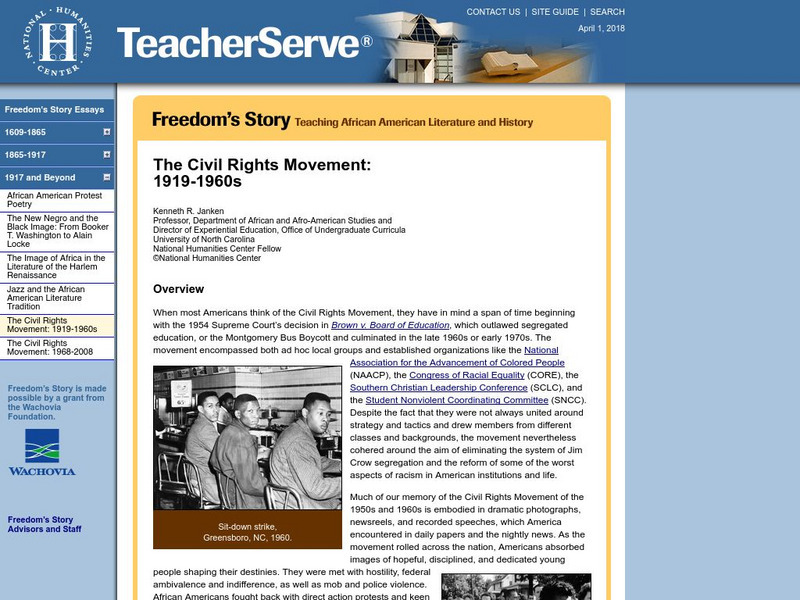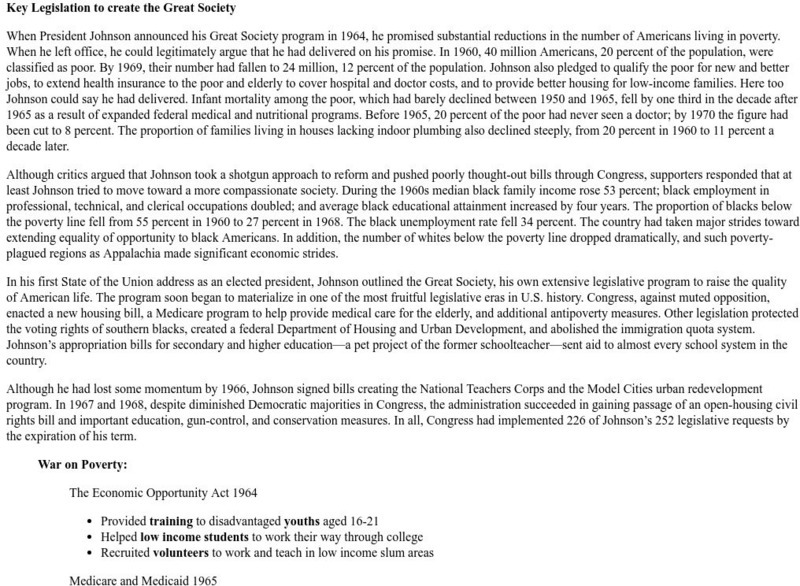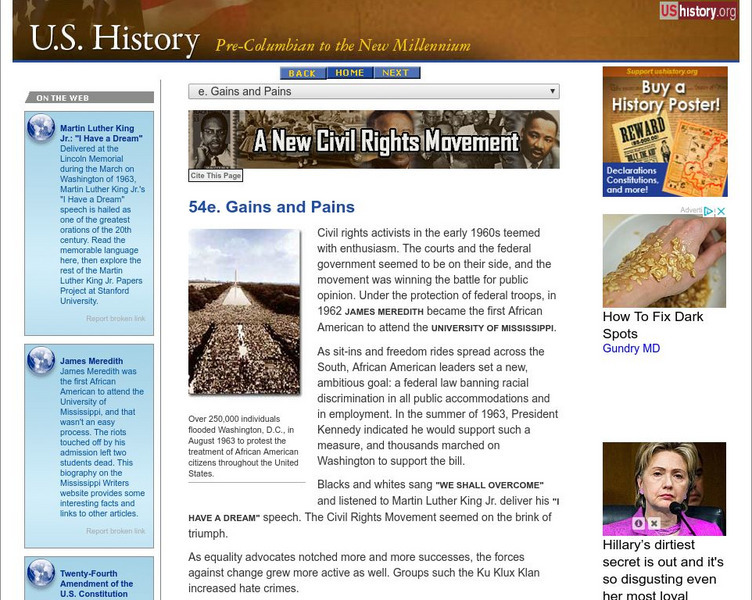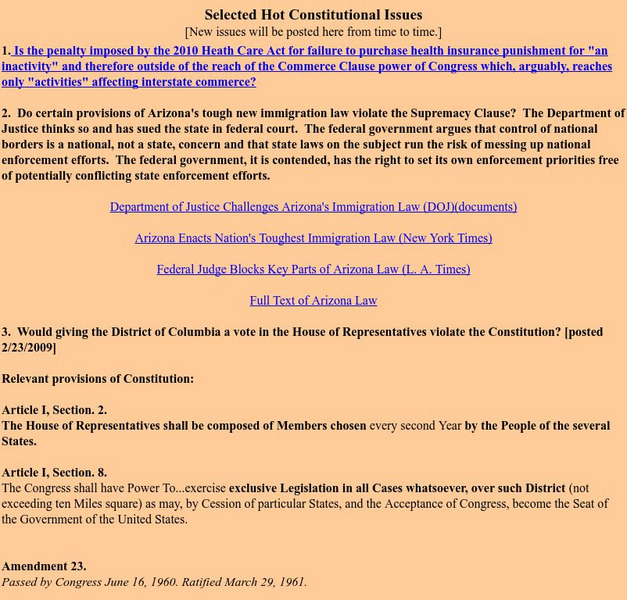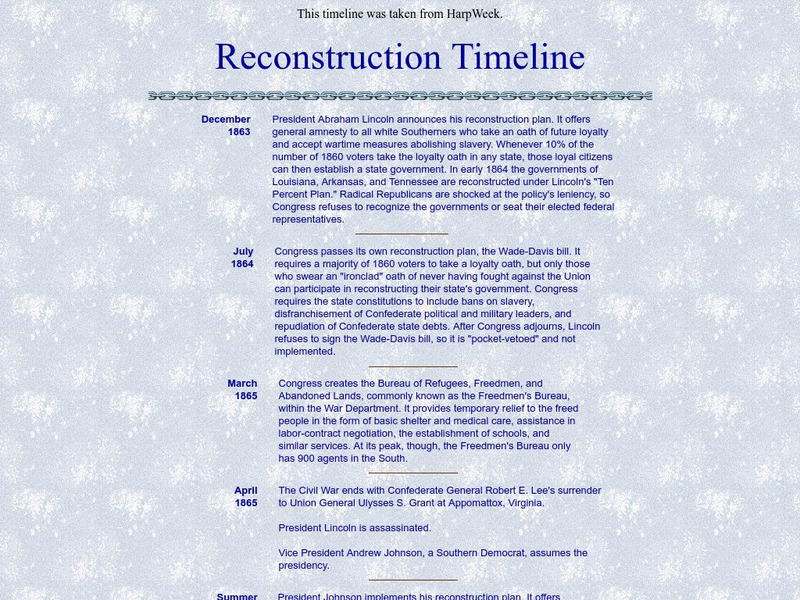Digital History
Digital History: Affirmative Action and the Case of Allan Bakke [Pdf]
The history of affirmative action was interwoven with the Civil Rights Act of 1964 and the Voting Rights Act of 1965. Read about how the federal government under both President Kennedy and President Nixon attempted to open up jobs to...
NBC
Nbc Learn: Finishing the Dream: 1964: Spotlights
A collection of archival video clips highlighting the African American struggle for equal voting rights in 1964. Looks at the Mississippi Freedom Summer where college students helped to register black voters, the murder of three of those...
Other
Finding Dulcina: Strom Thurmond Ends Longest Filibuster in Senate History
Read about Senator Strom Thurmond's epic filibuster in an attempt to forestall the passage of the Civil Rights Act of 1957. There is a brief biography of Thurmond and his political life, as well as information about the use of the...
Other
Center for Voting and Democracy Glossary
Brief and informative description of the Voting Act of 1965, as well as other definitions related to equal opportunity in voting.
Independence Hall Association
U.s. History: Martin Luther King, Jr.
A brief biography of civil rights hero, Martin Luther King, Jr. This article touches on his early life, but focuses on his actions as a leader of nonviolent change to bring equality to African Americans. Find a speech given by Robert...
Curated OER
National Park Service: International Civil Rights Walk of Fame: Lyndon Johnson
Read about President Lyndon Johnson's on how to end poverty in the United States as well as how to protect civil rights.
Library of Congress
Loc: America's Story: The First March From Selma
This article details a key event in the civil rights struggle--the demonstration organized by the Rev. Martin Luther King in Selma, Alabama on March 7, 1965, when 525 people met a police blockade on the Edmund Pettus Bridge.
National Humanities Center
National Humanities Center: Teacher Serve: The Civil Rights Movement: 1919 1960s
Article provides an overview of the Civil Rights Movement in America between 1919 and the 1960s with detailed discussion on racial equality, nonviolence and passive resistance, and segregation.
Raleigh Charter High School
Mrs. Newmark's Page: Civil Rights
This interactive activity focuses on the Civil Rights Movement.
Other
Weber State: Key Legislation to Create the Great Society
Read about President Lyndon Johnson's vision for a more compassionate America, one that offered educational and housing opportunities, protected the envrionment, and cared for the nation's seniors. Find a list of the legislation passed...
PBS
Pbs Learning Media: Martin Luther King Jr.: Civil Rights Leader
Students will explore how King's deep-seated commitment to nonviolence contributed to the expansion of social justice in the United States, particularly for African Americans.
The National Alliance on Mental Illness
Nami: Maine Upholds Voting Restrictions
This article discusses how Maine has upheld certain voting restrictions for the mentally ill.
Independence Hall Association
U.s. History: Gains and Pains
Read about the legal gains made by the civil rights movement, including the Civil Rights Act of 1964, juxtaposed against the real-life actions meant to deny African Americans their right to racial equality not just legally, but...
Digital History
Digital History: The Great Society and the Drive for Black Equality
Read about President Lyndon Johnson's vision for the Great Society. See how the programs instituted were focused on lifting the poor from poverty, especially African Americans. Included were laws to increase civil rights and voting...
University of Missouri
Exploring Constitutional Conflicts: Select Hot Constitutional Issues
Among other issues considered, Hot Constitutional Issues probes into the constitutionality of giving Washington, D.C. a vote in the House of Representatives, raised in 2009.
Gilder Lehrman Institute of American History
Gilder Lehrman Institute: History Now: Securing the Right to Vote: Selma to Montgomery Story
[Free Registration/Login Required] Lesson plan asking this essential question: "What conditions created a need for a protest march from Selma to Montgomery in 1965 and what did that march achieve?"
Khan Academy
Khan Academy: Ap Us History: 1890 1945: The Age of Empire: The Progressive Era
The Progressive Era from the 1890s to the 1920s evolved as a response to the negative effects of industrialization. Reforms that emerged provided protections for workers and consumers and gave women voting rights. Backlash against the...
Black Past
Black Past: Wilkins, Roy
This encyclopedia entry recounts briefly the life of Roy Wilkins, a very influential civil rights leader.
Center For Civic Education
Center for Civic Education: Becoming a Voter
In this lesson, students apply their state's requirements for registering to vote. Students learn when and how to register, how to complete a voter registration form, and when and how to reregister.
Siteseen
Siteseen: American Historama: Selma March
The Selma Freedom March from Selma to Montgomery, Alabama took place in March 1965 as part of the voting rights movement.
PBS
Pbs Learning Media: Fighting Racism: Civil Rights in the Progressive Era
In this interactive lesson, students take a closer look at some of the women who risked their lives to fight against systemic racism in the United States during the Progressive Era.
Ducksters
Ducksters: Civil Rights for Kids: African American Civil Rights Movement
Kids learn about the history of the African-American Civil Rights Movement including segregation, Jim Crow laws, protests, Martin Luther King, and the passage of the Civil Rights Act on this site.
Independence Hall Association
U.s. History: Alien and Sedition Acts
A great description of the Alien and Sedition Acts, passed by the Federalist Congress in 1798. See how the Federalists tried to hang on to power by restricting voting privileges and infringing on free speech and freedom of the press.
Mount Holyoke College
Mt. Holyoke: Reconstruction Timeline
Here's a concise timeline that highlights the important facets of reconstruction from the announcement of Abraham Lincoln's reconstruction plans to the end of reconstruction at the election of Rutherford B. Hayes.
![Digital History: Affirmative Action and the Case of Allan Bakke [Pdf] Website Digital History: Affirmative Action and the Case of Allan Bakke [Pdf] Website](https://d15y2dacu3jp90.cloudfront.net/images/attachment_defaults/resource/large/FPO-knovation.png)



